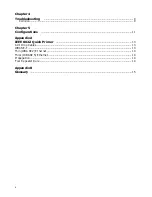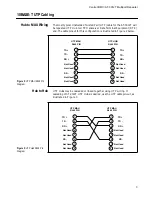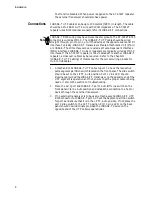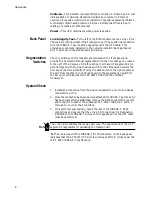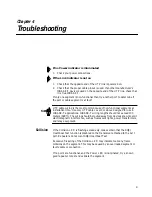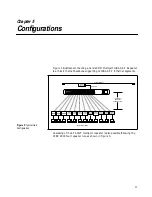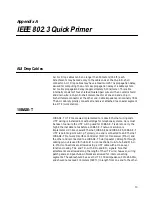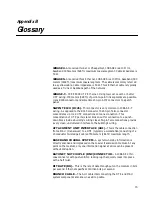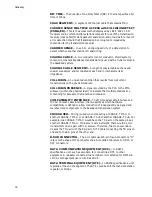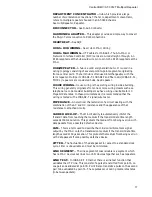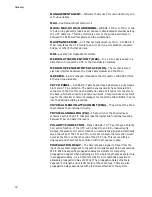
15
Appendix B
Glossary
10BASE2
—Also called thinnet or CheaperNet, 10BASE2 is a 10 MHz,
baseband, 185 meters (606 ft.) maximum coaxial segment. Cable impedance is
50
Ω
.
10BASE5
—Also called thick Ethernet, 10BASE5 is a 10 MHz, baseband, 500
meters (1639 ft.) maximum coaxial segment. The cable is commonly referred
to as yellow cable. Cable impedance is 50
Ω
. Thick Ethernet cable is typically
used as a trunk or backbone path of the network.
10BASE-T
—IEEE 802.3 UTP Ethernet. Using low cost Level 3 or better
UTP wiring, 100 meters (328 ft.) of point-to-point link segments are possible.
Uses RJ45 connectors and sometimes 50-pin AMP connectors to a patch
panel.
50-PIN TELCO (RJ21)
—This connector is very common in 10BASE-T
wiring. As opposed to the RJ45 connector, the 50-pin Telco connector
concentrates up to 12 UTP connections onto one connection. This
concentration of UTP ports is later broken out for connection to a punch-
down block inside a building’s wiring closet. 50-pin Telco connections provide
a very clean, uncluttered interface to the building’s wiring.
ATTACHMENT UNIT INTERFACE (AUI)
—This is the cable connection
from a MAU (transceiver) to a DTE (typically a workstation) consisting of a
15 conductor twisted pair cable of 50 meters (164 ft.) maximum length.
BASEBAND COAXIAL SYSTEM
—A system whereby information is
directly encoded and impressed on the coaxial transmission medium. At any
point on the medium, only one information signal at a time can be present
without disruption.
BAYONET NUT COUPLE (BNC) CONNECTOR
—A 10BASE2 thin
coax connector with push-on BNC locking lug that quickly locks into place
with a half twist.
BIT RATE (BR)
—This is the rate of data throughput on the medium in bits
per second. Ethernet specifies 10 million bits per second.
BRANCH CABLE
—The AUI cable interconnecting the DTE and MAU
system components also known as a Drop cable.

